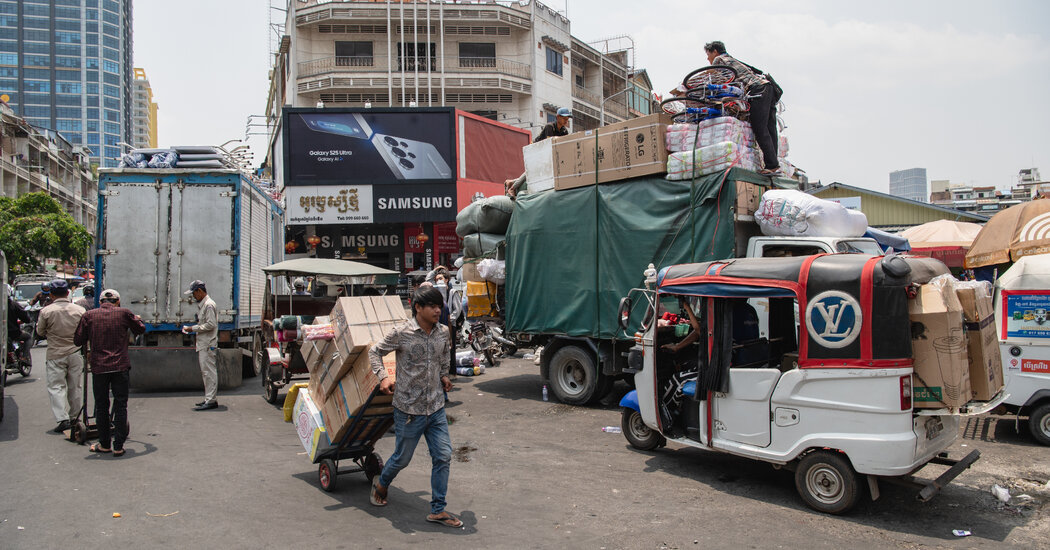Chinese government data released on Friday offered a peek into how the trade war is already reordering the flow of goods around the world.
Exports from China jumped last month, driven by trade to other countries in Southeast Asia, even as President Trump’s tariffs on Chinese goods forced a sharp slowdown in shipments to the United States.
Inside China, imports fell as demand continued to weaken.
The trade numbers released on Friday capture activity in April, when tensions between the United States and China escalated more rapidly than expected. In a series of measures, President Trump raised tariffs on Chinese goods to 145 percent, and China responded with 125 percent levies on American goods.
As a result, Chinese shipments to the United States plunged by 21 percent compared with the same period a year earlier. But Chinese exports to Southeast Asian countries surged by 21 percent.
“This is an early signal that something is going on in terms of a front-loading of the supply chain,” said Raymond Yeung, the chief economist for greater China for ANZ, a New Zealand bank. “It’s a redirection of trade that is already well documented,” he said.
Chinese exports to countries like Vietnam and Thailand have soared, Mr. Yeung said, while data on imports from Taiwan and South Korea suggested that Chinese factories are taking advantage of a 90-day pause in tariffs on countries across the region to complete orders destined for the United States.
Overall shipments of goods from China jumped by 8.1 percent in April compared with a year earlier. The data showed a continuation of a trend in the past few months of Chinese factories rushing to get goods shipped as the trade war worsened. Many of those goods ended up in some of the export-oriented countries of the Association of Southeast Asian Nations, or ASEAN.
“Domestic producers have halted most of their production targeting the U.S. market, but they are gearing up product for ASEAN countries because that is where they have set up their factories in preparation for this situation,” said Dan Wang, a director on Eurasia Group’s China team, referring to the 10 countries that are part of the Southeast Asian Nations.
In recent years, as China’s domestic economy has been hobbled by a housing market crash, the government has leaned more heavily on the shipment of its goods overseas. The property crisis has spread through the rest of the economy and left banks and local governments stuck with piles of debt, and young people have struggled with fewer choices for jobs.
The April data is likely to give policymakers in Beijing a breather amid broader worries about the trade war’s impact on China’s economic outlook. But Economists warn that unemployment could spike if declining factory orders force companies to fire workers. Chinese factories experienced their steepest monthly slowdown in more than a year in April.
Chinese financial regulators signaled this week that they are ready to step in to boost domestic demand to weather the impact of the trade war. The central bank cut interest rates and loosened the money taps to direct more money into the economy to encourage businesses and people to spend.
U.S. Treasury Secretary Scott Bessent and Jamieson Greer, the U.S. trade representative, will meet with China’s vice premier, He Lifeng, in Geneva this weekend, the first formal meeting on trade since Mr. Trump raised tariffs into the triple digits in April.
Zixu Wang contributed to reporting from Hong Kong.











